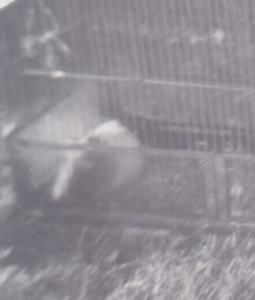Pseudepigrapha always struck me as a great name for a pet guinea pig.Neither members of the porcine family nor from Guinea, these rodents are remarkably companionable.But like the word pseudepigrapha, this post isn’t about guinea pigs.I’ve been reading various documents among this sprawling category of texts, and I can see the fascination they hold for scholars of Second Temple Judaism.My own specialization was on the earlier end of the spectrum—Ugarit had ceased to exist even before a first temple was built and provided clues to how this whole religion got started in the first place, but that’s a story for another time.The account of the pseudepigraphacannot be summarized easily.Some of the documents have been known to scholars for a very long time.Others have been (and continue to be) discovered, some quite recently.

Not a pig.
The documents classified as pseudepigrapha generally bear the name of someone who couldn’t have been their “author.”We now know that ancients didn’t think of writing the same way we do.They didn’t publish books like modern writers do, and scholars have been exploring how the category of “book” distorts even the Bible, let alone books that didn’t make the cut.None of this diminishes the intrigue of these ancient texts.The world into which Jesus of Nazareth was born contained many texts and traditions.There was no Bible as we know it today—it was still being written (or compiled)—and no canon, literally a measuring stick, existed to determine what was holy and what was not.
As discoveries in Mesopotamia have made clear, although few could read or write, writing itself was prolific, at least given the technological limitations.Today if one wishes to specialize the literature of one subsection of one time period, and probably even some subdivision of that, has to be selected.Universities don’t see the point, and much of this ancient material is understudied because there remains money to be made in looking at economically viable topics.The pseudepigrapha have nevertheless come into their own.Perhaps because some of the stories these documents contain have made their way into pop culture.Even as I make my way through many of these texts that are young in my eyes, I realize the proliferation of writing made such growth almost inevitable.There remains, however, a high-pitched squealing that demands attention, regardless of what the exact genus and species of the creature may be.
